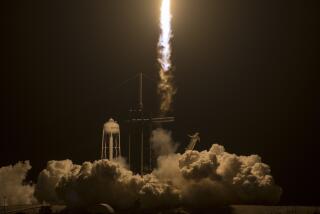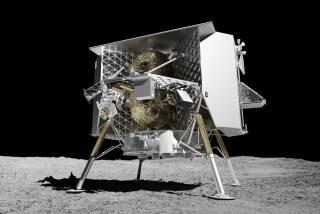Titan Rocket Blast Traced to Bad Insulation
- Share via
WASHINGTON — The explosive loss of an unmanned Titan 34D rocket during a military mission last April was most likely caused by the peeling of insulation inside a solid-fuel booster, the Air Force said today.
The loss of the rubberized insulation allowed the burning fuel to eat through the thin metal skin of the rocket booster, touching off a catastrophic explosion, said Brig. Gen. Nathan J. Lindsay.
While there is no evidence indicating the large O-rings on the solid-fuel boosters failed--as was the case with the space shuttle Challenger--the findings will force NASA as well as the Air Force to review the insulation bonding techniques used on the boosters, Lindsay said.
Rockets of Similar Design
The solid-fuel boosters used on the Titan and the space shuttle are very similar in design.
“We believe the cause of the mishap was a failure in the thermal insulation in a segment of one of the two solid rocket motors,” said Lindsay, who headed a special Air Force accident investigation board.
“The rubber insulation most likely separated from the steel rocket motor case, allowing damage by the propellant combustion products. We found no evidence of solid rocket motor design deficiencies. The O-ring seals of the solid rocket motors did not contribute to the mishap.”
Lindsay, in outlining the results of the accident investigation, disclosed that the loss of the Titan on April 18 caused an estimated $70 million in damage to launch pads at the Vandenberg Air Force Base in California.
More to Read
Sign up for Essential California
The most important California stories and recommendations in your inbox every morning.
You may occasionally receive promotional content from the Los Angeles Times.













